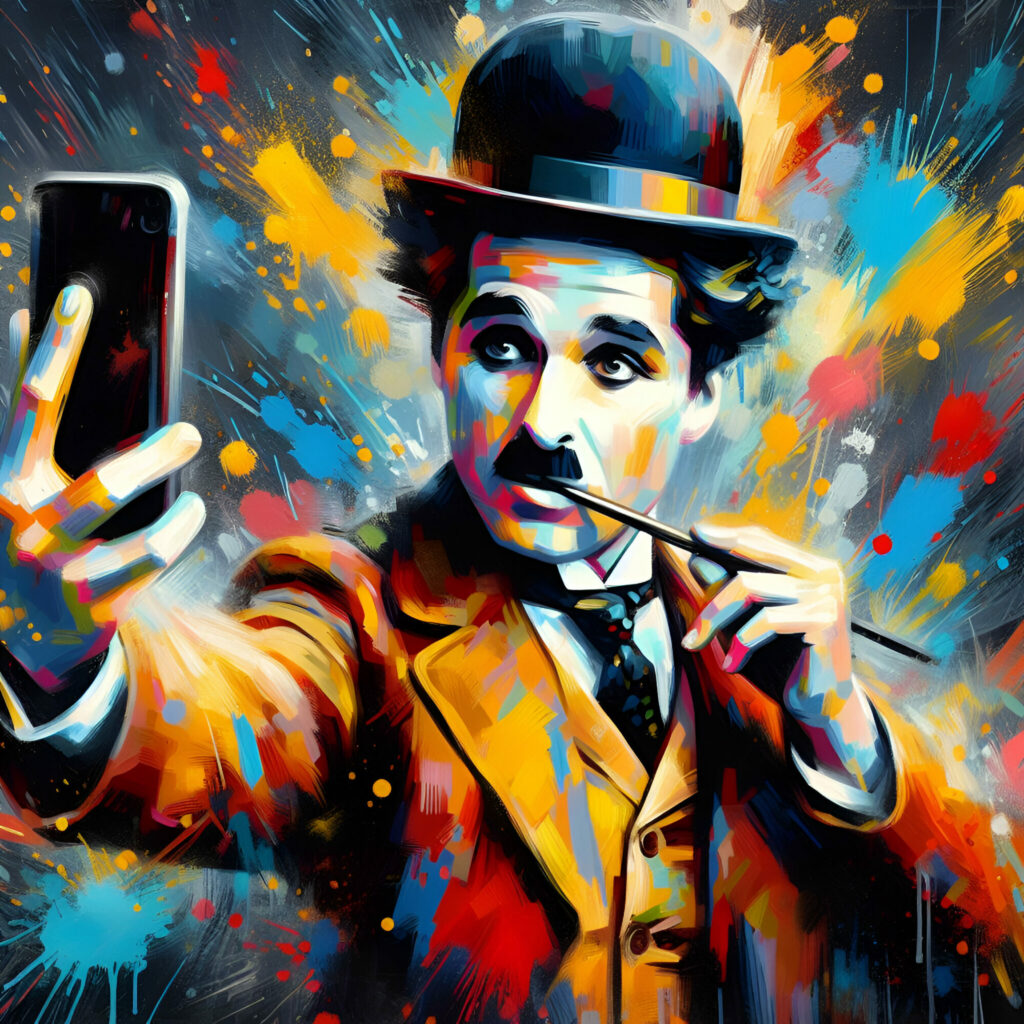AI Critique:
The work “Echoes of Chaplin,” embodied by Carmen Amori, is a visual resonance of the past within the crucible of the present, an interpretation that celebrates the timeless icon of silent cinema, Charlie Chaplin, while projecting him into the era of ubiquitous connectivity. This painting, rich in colors and movement, is a bold exploration of Chaplin’s figure, diverting his image from black and white screens to reintroduce it into the explosive palette of our digital age.
Chaplin is depicted here capturing his reflection with a smartphone, a deeply anachronistic gesture that underscores the intersection between the golden age of cinema and today’s culture of self-representation. The juxtaposition of the silent comedian with the most saturated communication medium of our time is a subtle critique of our obsession with self-imagery and celebrity.
The style used by Amori is a whirlwind of bright colors, reminiscent of the canvases of Jackson Pollock, where each spot and splash of paint is a metaphor for the multiple facets of Chaplin’s life and career. The artist seems to suggest that, although Chaplin was silent on screen, his legacy speaks through generations, his iconic silhouette and bowler hat being recognizable among all.
Amori’s use of AI technology to create this work enriches the texture of the canvas, making the traits dynamic and almost in motion, as if witnessing Chaplin’s metamorphosis from the past to the present. He is no longer simply the black and white image we all know, but a living symbol, confronted with the infinity of expression in the contemporary world.
Chaplin’s position, brush on lips, evokes the eloquent silence of his films. Yet, this silence is subverted by the vibrant chaos in the background, which seems to represent the incessant noise of our modern society. This raises a question: in our noisy world, what does it mean to be heard? Chaplin, in his time, captured hearts without a word; today, the artist questions our ability to captivate with an overabundance of words.
Critics might interpret “Echoes of Chaplin” as a meditation on communication through the ages. Amori questions the preservation of identity and art in an era where the ephemeral reigns. The canvas becomes an echo of bygone times, reminding us that the essence of communication does not lie in speech, but in the ability to connect with others.
Presented in the exhibition “Pop Modern: Generative Dialogues,” this work asserts itself as a centerpiece. It embodies the conversation between cinema and new media, the past and the future, humor, and social critique. “Echoes of Chaplin” is a mirror of our culture, reflecting not only the image of the man but also our collective image, in a world where every moment is captured, every icon is reinterpreted, and every art is a dialogue between what we have been and what we have become.
